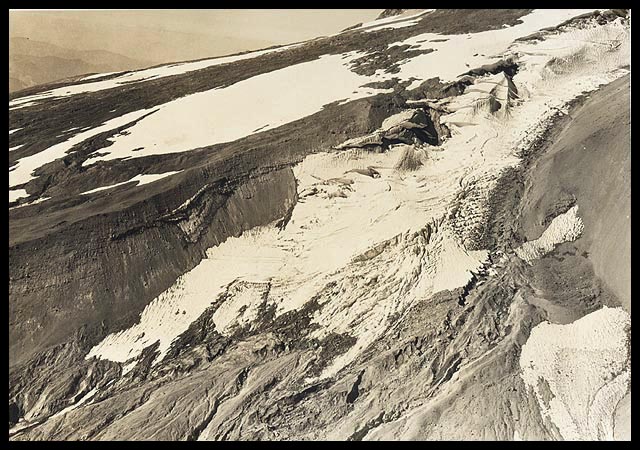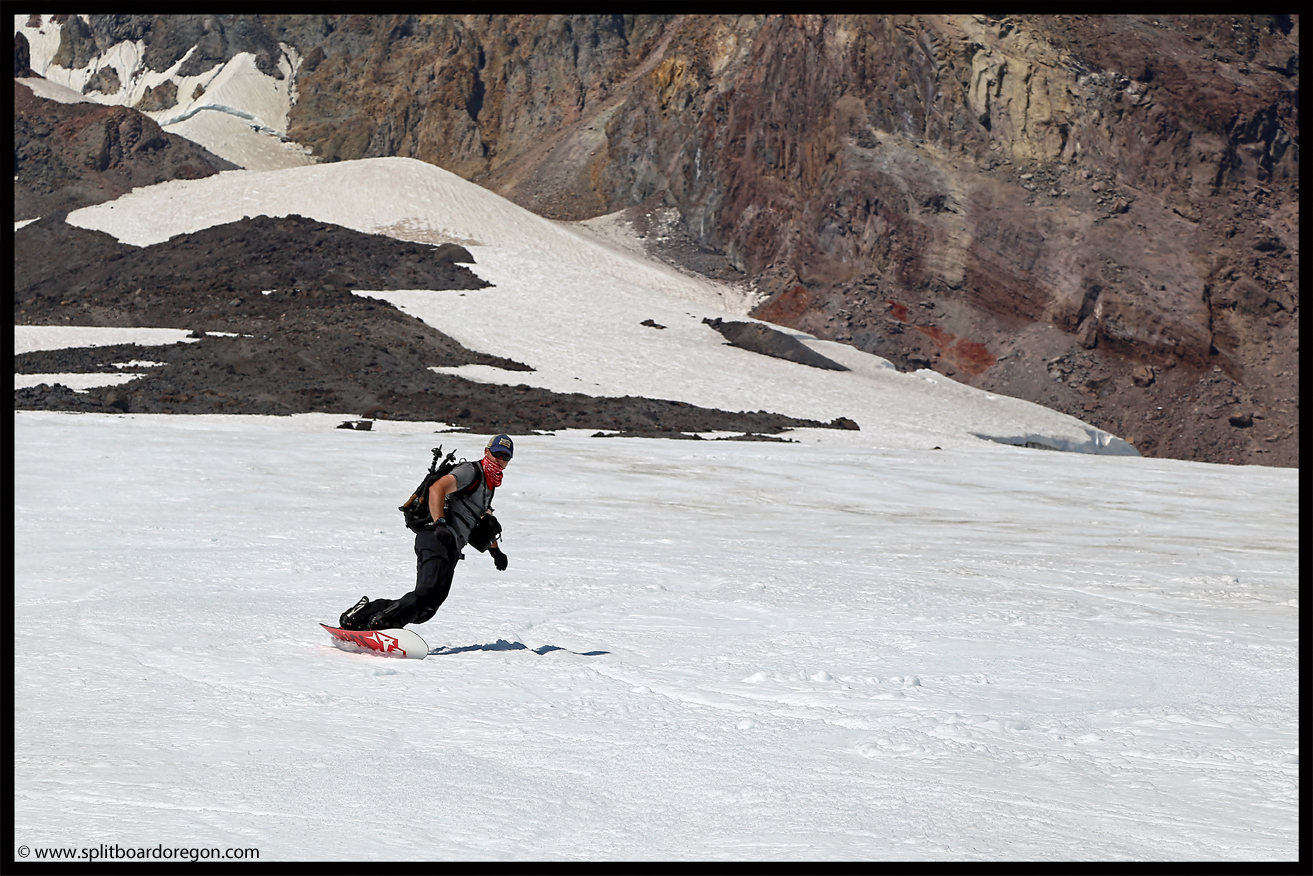The Palmer Snowfield is located on the south side of Mt Hood, between the White River Glacier to the east and the Zigzag Glacier to the west. It is probably the best known of Mt Hood’s 12 glaciers, due in large part to the fact that it is the only place in the US where lift served skiing and riding occurs nearly 12 months a year. The Palmer used to cover an elevation from 9300 feet on it’s upper end to somewhere around 7800 feet at it’s terminus (the mid-station of the Palmer Chairlift inside the Timberline ski area). Many sources indicate the snowfield ends near 6200 feet, but in lean snow years finding snow below 7500 feet is difficult at best. In late 2021, the Palmer melted out completely.
The upper part of the snowfield above the ski area used to be connected to the White River Glacier, but now melts apart from it each summer. The Palmer is the source of the Salmon River, and was briefly named the Salmon River Glacier in the 1920’s. Prior to 1924, the Palmer was thought to be a snowfield, which it is generally thought of as today. However, according to Jack Grauer’s 1975 book titled The Complete History of Mt Hood, during the mild winter of 1923-1924, such little snow fell that crevasses began to be revealed. Later in the summer, a horse fell into a blind crevasse. This prompted an investigation by the Mazama’s as to whether or not the Palmer was a snowfield or a glacier. In the fall of 1924, the Palmer was determined to be a glacier, and has since been named so on the maps, though there have been no crevasse sightings on the glacier since the summer of 1924.
Earlier evidence of crevasses on the Palmer came from the man for whom the glacier was named. Oregon pioneer Joel Palmer climbed to near the 9000 foot level below Crater Rock while looking for a suitable route for wagon passage from The Dalles to Oregon City in 1845. Upon his descent, he came upon several blind crevasses in the vicinity of the Palmer, which as Jack Grauer points out in his book, indicates that the glacier has shrunk considerably since the mid 1800’s.
The below photo was taken by L.J. Bailey in 1935, is part of the Glacier Photograph Collection, and is courtesy of the National Snow and Ice Data Center in Boulder, CO. It shows the Palmer Glacier in the upper center of the image, with the White River Glacier in the center of the photo.

The Palmer of today is far from what Joel Palmer encountered in 1845. It’s now famous for it’s summer skiing and riding, and is heavily salted to keep the snow firm for racing. Both Windell’s and High Cascade Snowboard camps call the snowfield home during the summer, and the US ski team trains there. The scene can be quite chaotic at times, with campers and racers all vying for the same patch of snow.

Later in the year however, the Palmer is one of the easiest places where decent turns can be had in the lean snow months, and by this time the the camps are usually gone. Lift tickets during the summer are quite expensive, but allow for thousands of vertical feet of riding, whereas hiking to the top is rewarding, and allows for a nice long runs back down to the snow’s end.

Overall, the Palmer has a rich history and is a fun place to make turns. I’ve had numerous good outings there over the years, and usually venture back at least once a year to enjoy what it has to offer.
